Introduction by the editor for CHORS 2
CHORS 2
Introduction by the editor
The first CHORS almanac was published in New Year 1946 / 47, though dated “October,” but really at Christmas: The introducing picture drawn by Halyna Mazeppa [sic] shows the shepherds worshipping before the manger. At that time, but a very small group of Ukrainian writers met under the name of “CHORS” – who is the sun-god of the ancient Slavs. The Apollon in the Hellas of the Steppe: Yuriy Sherech and W. Ber (Professor V. Petrov) took part in editorship. “CHORS”, planned to become a Quarterly of fine literature and arts, has no more appeared since then – on account of the special financial circumstances in the emigrants situation. For five years “CHORS“ has existed invisibly.
Yuriy Soloviy and his colleagues in art entered and completed the small rows. The Chorsites’ family increased by a Dinkelsbuehl artist group – “the anachcorets” [?]: the poetess Elisabeth Kottmeier and some other german colleagues in paintry, music and artistic dance [here added: thus it] was completed as to the kinds of art, and its extension, which in the beginning included but one notion, was enlarged. Thereby the small Franconian town of Dinkelsbuehl became the temporary center of the CHORS activity. Here, 1950, CHORS got the base to cooperate with the painters Hermann Anselment, Ernst Vogel, Gerhard Knieschon, Barbara Augspach; later on with the dancer Eugen Poranski and the pianist Maria Poranski – but, first of all, with Elisabeth Kottmeier, enthusiastic friend of modern Ukrainian poetry, an anthology of which she has prepared in her translations.
The two languages edition “CHORS 2” shall be a document of the first Dinkelsbuehl period of CHORS activity: 1950/1951.
In spite of its origin in the modern tendencies of art, CHORS never has fixed itself at one of them. The reader will find here even works of writers and artists who are not official members of the CHORS Family. CHORS rather selects according to this principle: firstly to choose among all those representatives of art it can sympathize with, then, if a special representative is basing on it. Their principle allows CHORS to appreciate in this representative every peculiarity of style and tendency: this is the principle uniting the different representatives to the only principle of independence in art, which is the sovereignty of art. It is the principle, to create from the artists inner substance, from his unrepeatable world, from his individual vision of spirit and intention, which he projects into the reality surrounding him. This principle – the primate of the creating form – does not depend on how form is to be understood: may form be considered as an action continually realizing itself and becoming a mediator when one substance is as a phenomenon untouched within itself. getting [sic] its valour just by its perfection which is independent from any movement.
And still one, something which is important: The Ukrainian Chorsites appreciate the German Chorsites as the immediate heirs of the bright tradition of the “Blauer Reiter”, Munich, the forces of whose – German and not German – artists endeavoured in the dawn of our new-European epoch, to climb up via the arc of one nation – the German expressionism – to the steep tops of the universal human art.
E.K.
In this letter, the author, Ihor Kostetskyi, chooses the German transliteration of the journal’s name.

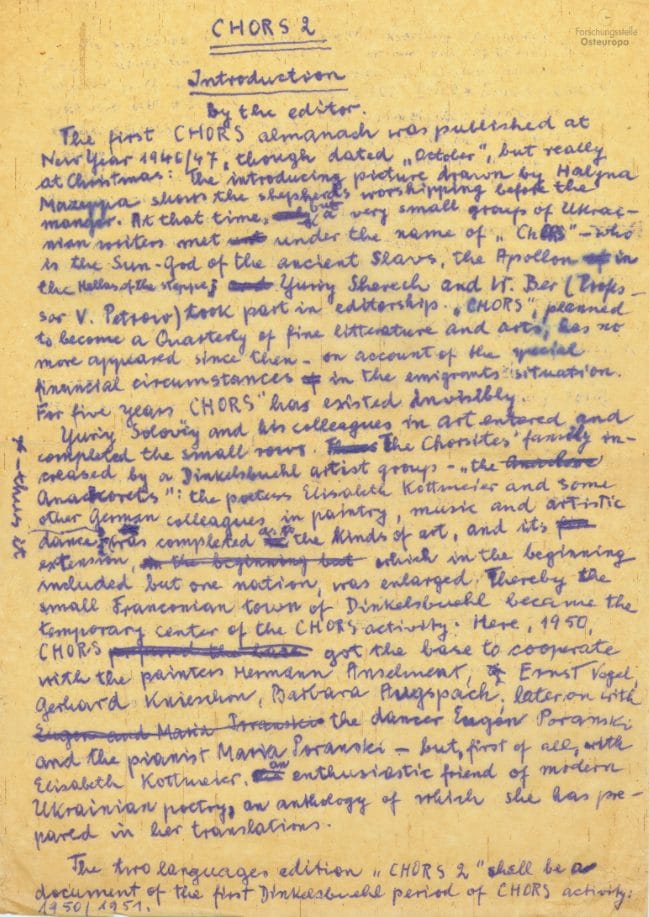
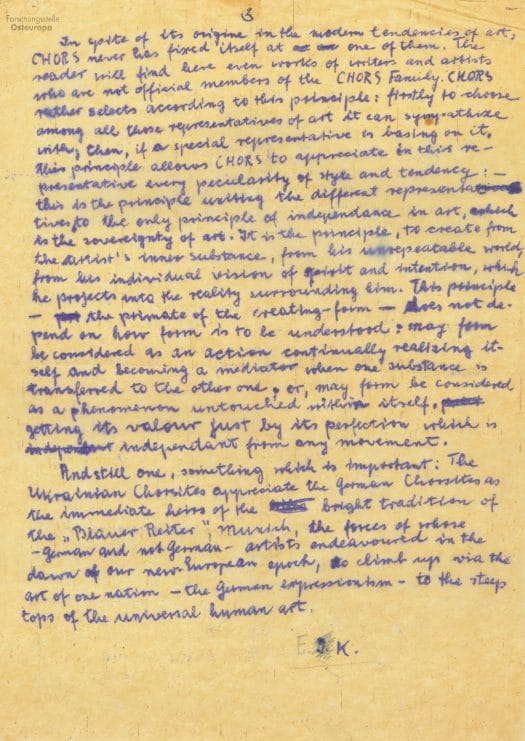
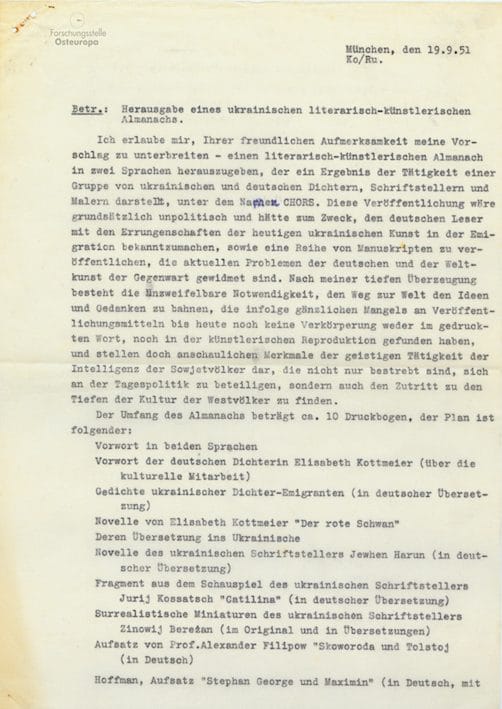
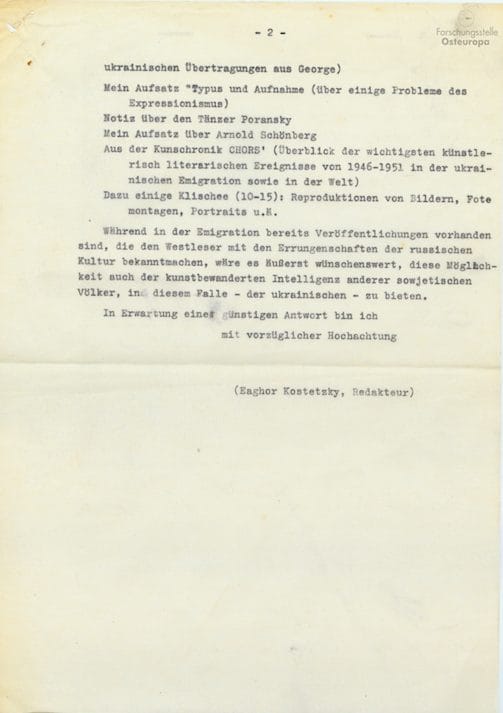
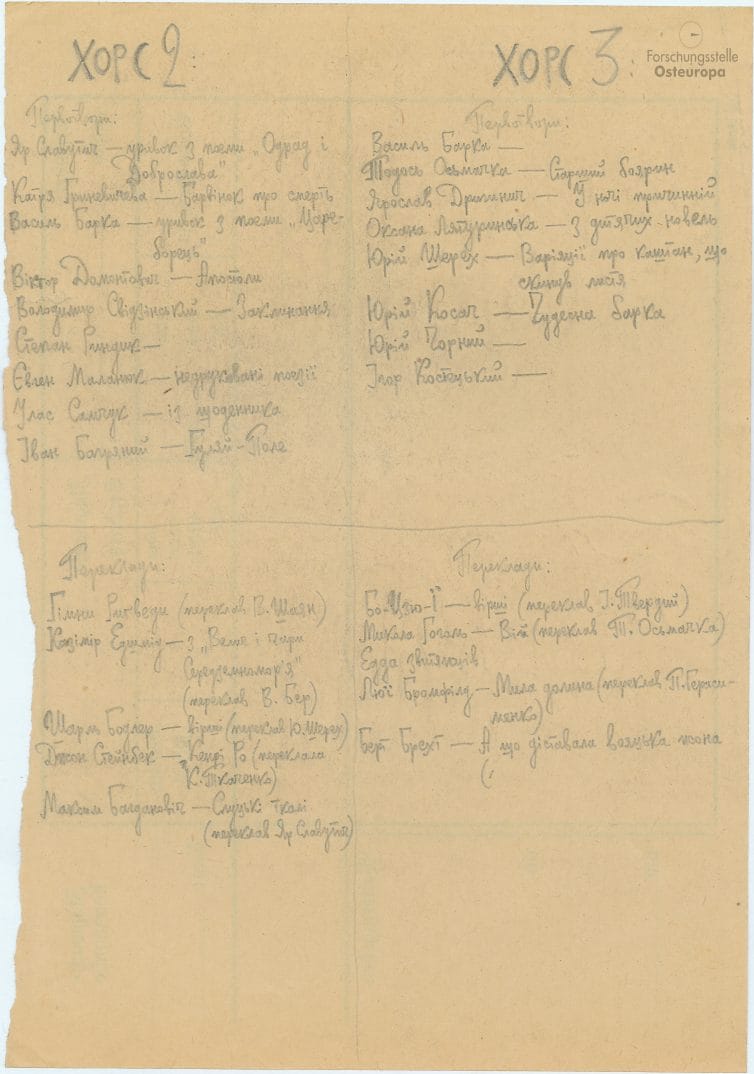


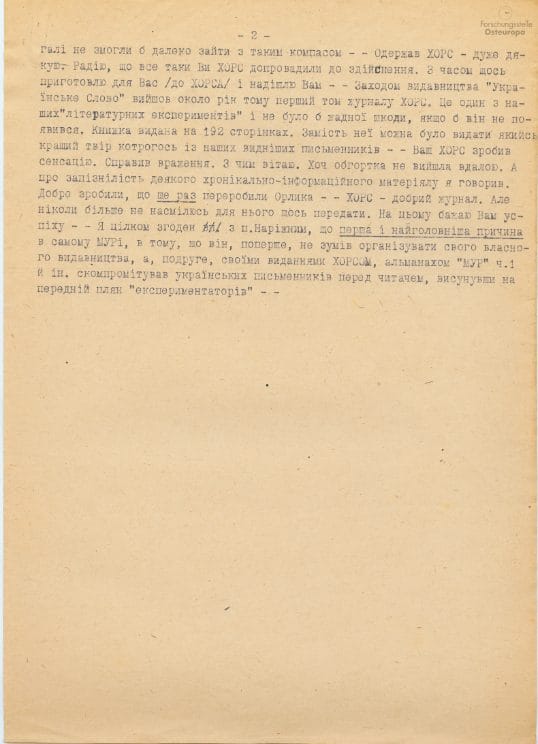

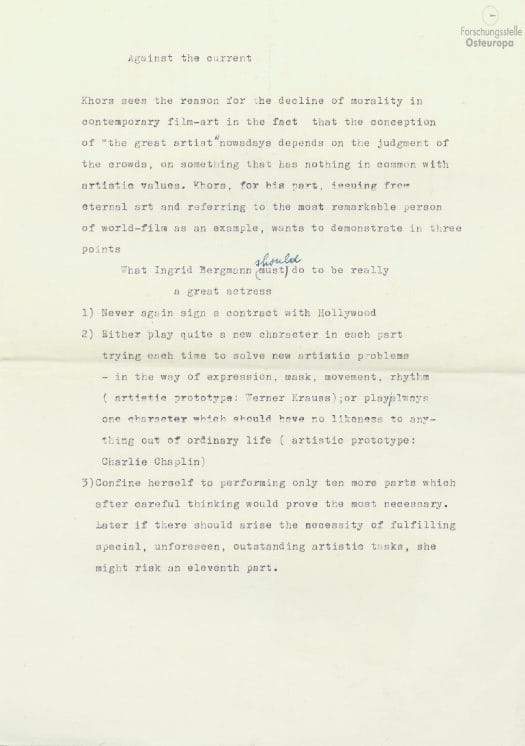
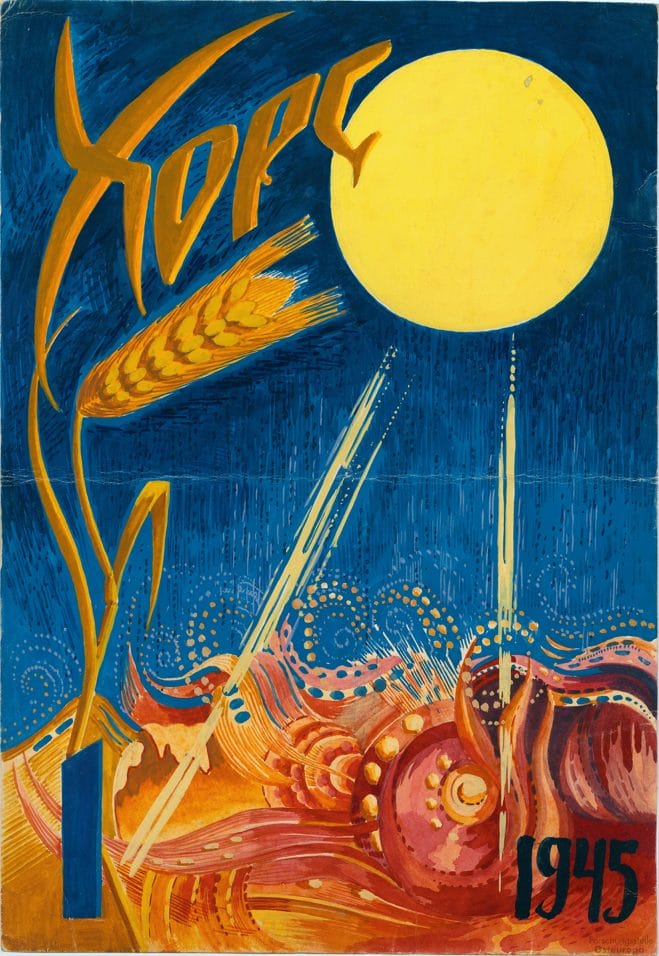
The Ukrainian DP journal KHORS was initially planned to be quarterly. However, the first KHORS edition in 1946 was also the last. The following documents provide insight into the reasons for the failure to publish subsequent issues and interesting evidence about the financial situation of the Ukrainian diaspora in the American occupation zone in general.
The second and third issues of KHORS were planned to be published shortly after the first. A handwritten list of the planned content for these two issues confirms this thesis. It was written in an old document form of the German Air Force from the Second World War. These forms were distributed to the residents of the DP camp in the form of notebooks. We can assume that these notes were made no later than the beginning of the second half of the 1940s.
Not only did the editors already plan for the second and third editions. They also collected reviews on the first edition. While many readers praised the content of the journal in the highest notes, the quality of the materials has been criticized more than once. Some readers complain about the journal being already damaged when it was delivered, others claim that the quality of the paper is outstandingly bad. Aware of this problem, Kosteckyi wrote in the introduction to the second edition, planned to be published under the title German-Ukrainian Almanac in late 1951, that KHORS was not published “due to the special financial circumstances of the migrant situation.”
An official American regulation for the occupied German territories from 1947 provided licensed media with a free pack of paper and editors with permission to travel free of charge in the three western occupation zones, which made it much easier to organize conferences and connect with culturally active people elsewhere. It appears that KHORS also tried to apply for such a permit. The document below, which has no addressee, could have been drafted to obtain this permission from the authorities, or it could have been sent to a potential publisher.